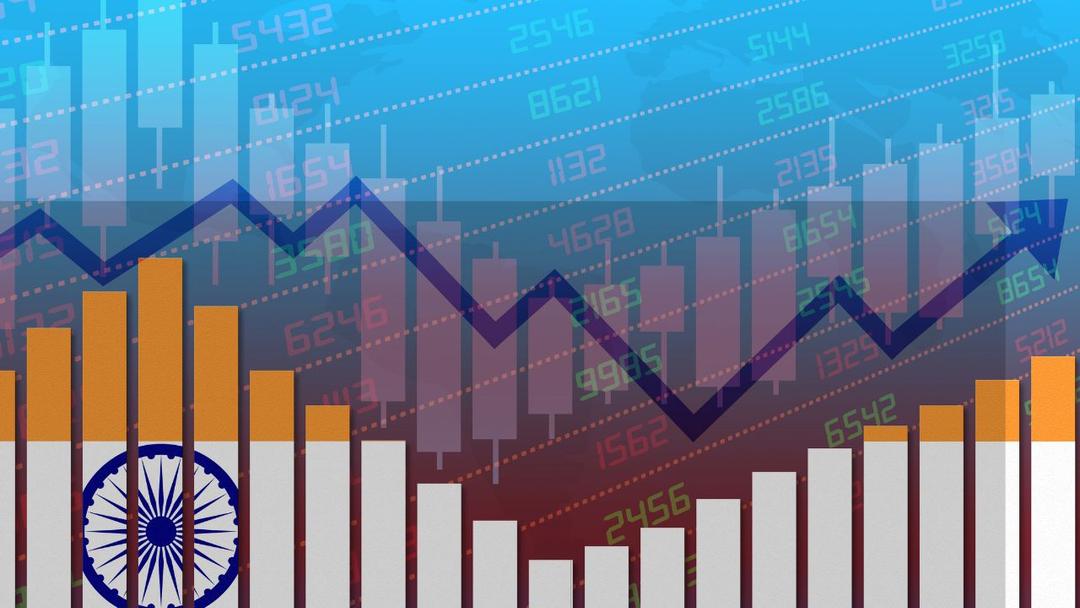India surpassed their past ruler, UK, to become 5th largest economy in the World
Posted by : Sheen Hitaishi | Mon Sep 19 2022

India, which was once dominated by Britishers and Britain when our natural and human resources were abused for their own country’s development, has now surpassed the UK to become the world’s fifth largest economy. A decade ago, India was ranked 11th among large economies, while the United Kingdom was ranked fifth. According to IMF forecasts, India has surpassed the United Kingdom, which is now ranked sixth, to become the world’s 5th largest economy, trailing only the United States, China, Japan, and Germany.
The fact that India will surpass the U.K. is supported by estimates made by Bloomberg using the IMF database and historical exchange rates on its terminal. “On an adjusted basis and using the dollar exchange rate on the last day of the relevant quarter, the size of the Indian economy in ‘nominal’ cash terms in the quarter through March was $854.7 billion. On the same basis, the U.K. was $816 billion,” stated a Bloomberg report.
This fact is also corroborated by the government’s GDP growth rate, which was recently disclosed.
India GDP grew 13.5% in Q1, strongest pace in a year
According to Government’s data, India’s GDP rose 13.5% in the April-June quarter, the strongest pace in a year, allowing it to maintain its position as the world’s fastest expanding economy. GDP growth of 13.5% YoY compares to a 20.1% expansion a year back and 4.09% growth in the previous three months to March. However, the prospect of a global recession and rising interest rates could stifle growth in the next quarters.
Going forward, India may face a number of challenges including a decreasing manufacturing sector growth rate of 4.8%, a worrying import to export trade deficit, and an erratic monsoon anticipated to have an adverse impact on agricultural growth and rural demand. In addition, the benchmark policy rate was increased by 140 Bps since May to manage inflation. To combat this, however, pent-up demand is fuelling consumption as consumers are stepping out and spending after two years of pandemic restrictions. Even the services sector has seen a strong bounce back that will get a boost from the festival season next month.
“While the world is on the brink of a recession, India is growing by 7%. There is inflation of 10% in the UK, 9% in the United States of America while India inflation’s rate is 6-7%, which is normal. It is good news for all Indians before the auspicious occasion of Diwali,” Charan Singh, economist, and chief executive of EGROW told ANI.
You may also like: Pharma sector Q1FY23
India GDP per capita still cause of concern
While there has been much jubilation over India’s inclusion in the top five economies in the world, it should be recalled that the country has a population 20 times larger than the United Kingdom, which results in a lower GDP per capita. As India had surpassed the UK in 2019 as well, to take the fifth-largest economic position in the world, but it has fallen back to sixth place in 2020. This could be attributed to the pandemic which started in 2020, thereby affecting every economy of the world.

Therefore, to achieve higher levels of growth in future and for it to become USD Five trillion economy by 2028-29 as stated by former RBI Governor D Subbarao, India’s GDP needs to grow by 9% Per Annum for next five years. Whereas, according to a State Bank of India (SBI) research report, India would surpass Germany in 2027 and Japan by 2029 if it continues its present rate of growth. The path taken by India since 2014 reveals India is likely to get the tag of 3rd largest economy in 2029, a movement of 7 places upwards since 2014 when India was ranked 10th. At its present rate of expansion, India should exceed Germany in 2027 and Japan, most likely, by 2029.
“Before 2014, we were in fragile five economies. It is a huge feat to become the 5th largest economy and surpass an economy like Britain from that position,” said Meenakashi Lekhi, Minister of State for External Affairs and Culture.
One of the important factors that will assist India in achieving future growth and widen its lead over UK, would be China Plus one strategy.
China Plus Strategy a boost to future growth of Indian Economy
China, which is known as the ‘World’s factory’ has been the centre of global supply chains in the last few decades owing to favourable factors of production and a strong business ecosystem. The increase in Chinese manufacturing’s share in the global merchandise trade from 3.4% in the early 2000s to 13.6% in 2015 and subsequently 13.1% in 2019 is clearly seen. This proportion has recently decreased, and the cause is linked to increased labour expenses, strict environmental regulations, compliance costs, and other difficulties. China accounts for about 30% of global manufacturing ($4 trillion).
The trend of diversifying the supply chain by shifting the production from China to other nations and reducing the reliance on China for supply chain, was followed by companies due to stringent environment norms, changing geo-politics, trade war, and willingness of large companies/MNC to de-risk their supply chain. The adoption of this strategy got a sudden spike after the emergence of COVID-19 and is now called as China Plus One Strategy. Moving forward with it, many MNCs are now expanding their operations and welcoming new manufacturing prospects in other developing Asian nations including India, Vietnam, Thailand, Bangladesh, and Malaysia.
According to a UBS estimate, 20–30% of manufacturing will move out of China. India is probably the next-best contender to profit from this changed circumstance because of its competitive advantage across a variety of industries, favourable production characteristics, hospitable business environment, and encouraging government initiatives.
The government also tightened its grip on the situation and moved forward in the same direction by launching PLI programmes for other industries, including textiles and electronics and increasing import taxes on a variety of goods.
Further, India is already drawing more interest from abroad. Apple is considering transferring some of the several final assembly units it has based in China as a result of Sino-American tensions and major supply chain issues in China. India, which the Wall Street Journal characterizes as “the company’s top manufacturing goal in Asia, outside China,” has reportedly come into sharp focus for the business.
India’s emergence as a major hub for manufacturing appears to be inevitable. After all, many South-East Asian nations, including China, have already done it. But EY Parthenon’s Claudio Knizek urges caution. “Several of my clients in the industrial sectors are searching for new supply sources, and India is frequently at the top of their lists.” Many of these businesses ultimately decide to relocate elsewhere because they believe that the Indian infrastructure is not yet ready or that the timing and location are not ideal from a strategic standpoint. India must therefore work to make it easier for businesses to locate here. Rest the inclusion of India world’s top 3 greatest economies is not impossible, as surpassing UK is just the beginning.
About the Author
Ketan Sonalkar (SEBI Rgn No INA000011255)
Ketan Sonalkar is a certified SEBI registered investment advisor and head of research at Univest. He is one of the finest financial trainers, with a track record of having trained more than 2000 people in offline and online models. He serves as a consultant advisor to leading fintech and financial data firms. He has over 15 years of working experience in the finance field. He runs Advisory Services for Direct Equities and Personal Finance Transformation.
Note – This channel is for educational and training purpose only & any stock mentioned here should not be taken as a tip/recommendation/advice
You may also like: Banking Sector reports decent Q1FY23 performance

Related Posts